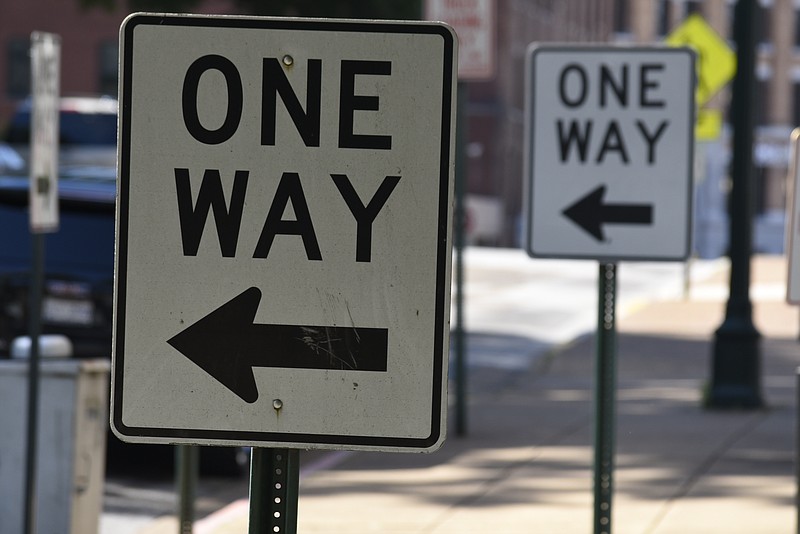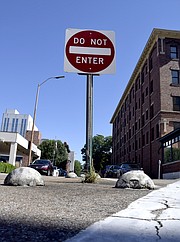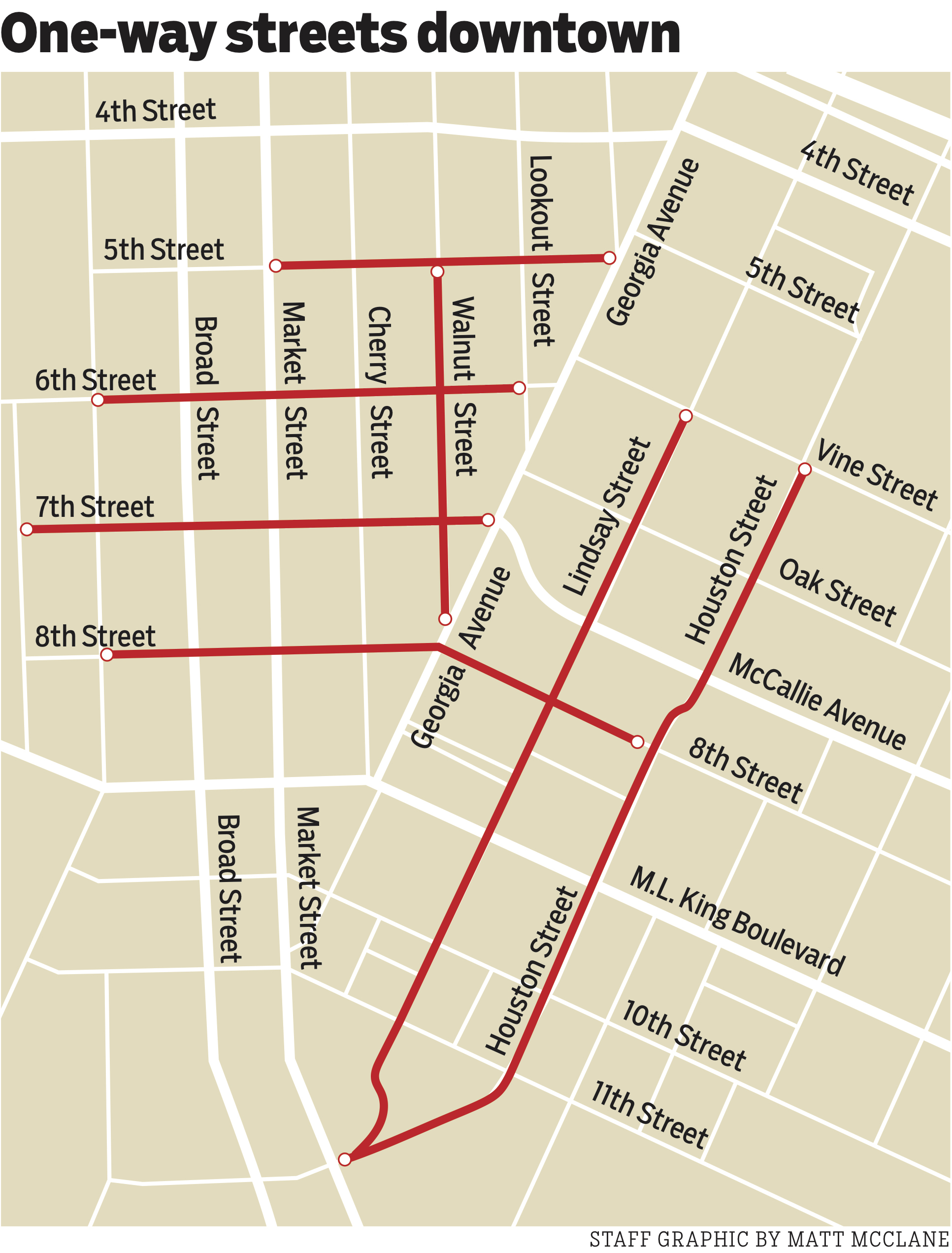There are a lot of reasons to consider making downtown streets two-way, and one is that it's good for business, consultants told local residents Thursday night.
Chattanooga's transportation department is working with engineering and design firms to study whether Fifth, Sixth, Seventh and Eighth streets, along with Walnut, Lindsay and Houston streets, should become two-way streets.
At a public hearing to discuss the study, Wade Walker with Alta Planning and Design showed aerial photos of McCallie Avenue and M.L. King Boulevard in the area of Douglas Street and Campus Drive, before and after both streets went from one-way to two-way in 2002.
The 2002 photo shows block after block of empty lots and shabby buildings.
By 2016, the same area was thick with new buildings housing offices, apartments, restaurants and craft breweries. No doubt the growth of the University of Tennessee at Chattanooga and the spreading circle of downtown renewal deserve credit.
But Walker also explained how one-way traffic results in "eclipsed frontage," which means commuters don't see a lot of the retail businesses along their routes to and from downtown. Two-way streets and traffic calming encourages motorists to see what's offered, and maybe stop and shop. That raises occupancy rates and property values, he said.
Walker, along with Jonathan Smith, a transportation engineer with Barge, Waggoner, Sumner and Cannon, and Tommy Trotter, traffic signal system manager with the Chattanooga Transportation Department, described the scope and goals of the study to a handful of attendees at the Development Resource Center.
They said that back in the 1950s and '60s, Chattanooga made many of its streets one-way to help commuters get into their downtown jobs and back out to their suburban homes as efficiently as possible.
Now, though, with downtown becoming a destination where people want to live as well as work, it makes sense to ease getting around in the city center and to treat the streets as a public asset.
"The goal is to move people, not just cars," Walker said.
The two-way conversion study came out of a series of community conversations that led to the City Center Plan and Chattanooga Forward, said Blythe Bailey, city transportation director.
Trotter said the city has given figures on traffic flow and analysis to the consultants, who are going to come back to the city in February with recommendations. The study will cost $70,000, he said.
Trotter encouraged business owners and residents who missed Thursday's hearing to submit their questions, ideas and suggestions to him at ttrotter@chattanooga.gov.
Contact staff writer Judy Walton at jwalton@timesfreepress.com or 423-757-6416.


